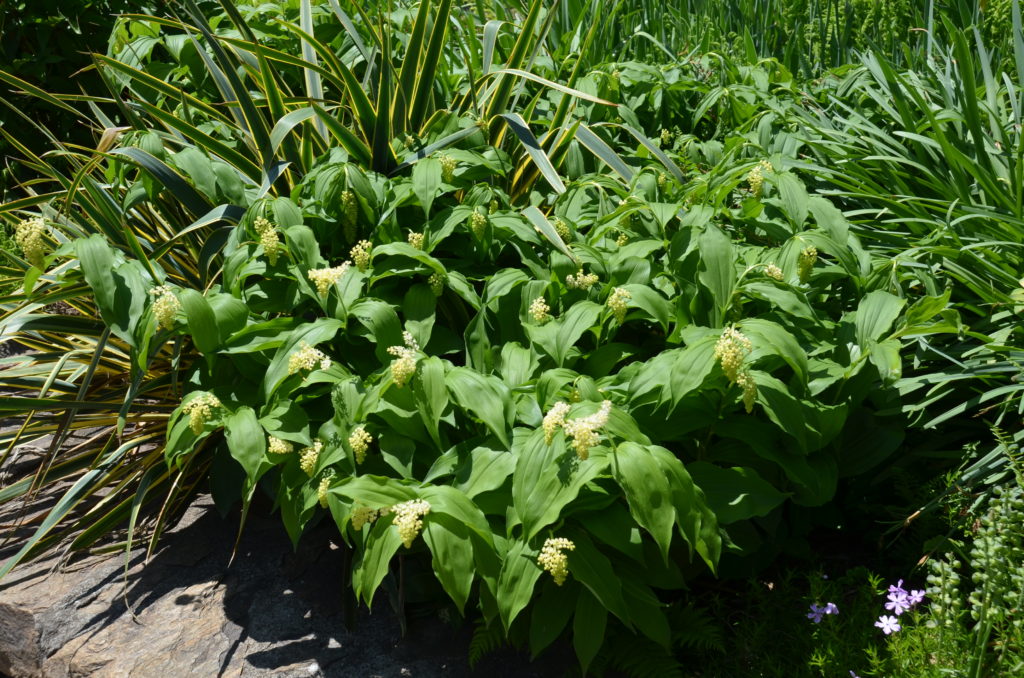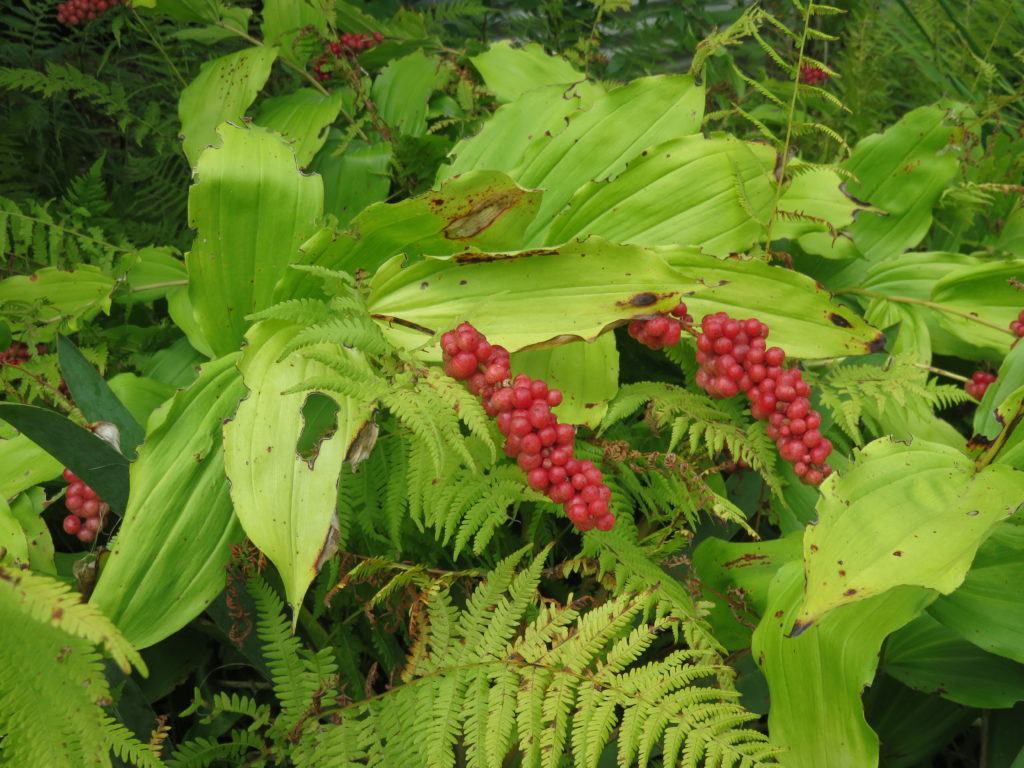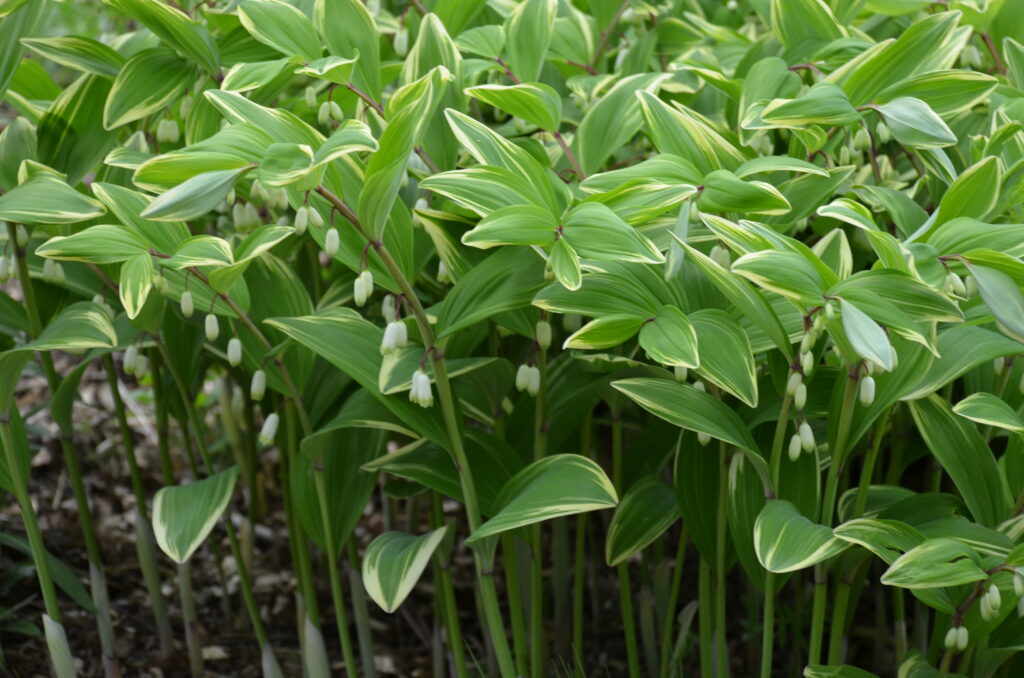False Solomon’s seal (Maianthemum racemosum) is a native woodland plant. It earns its common name because it looks very similar to Solomon’s seal (Polygonatum spp.). Both are in the lily family (Liliaceae) and are often seen growing together and easy to distinguish apart by the placement of the flowers on the plants.

Formerly classified Smilacina racemosa, this plant that ranges across most of North America north of Mexico in zones 3-9. Biologists reclassified to the genus Maianthemum a long time ago but is often listed by its old scientific name. Native Americans used the root and leaves medicinally and ate the young shoots and processed roots.
It is an herbaceous perennial, e. g., the foliage dies down to the ground in autumn and re-emerges in spring from the stout, fleshy, persistent rhizomes with secondary fibrous roots. The alternate, ovate leaves are produced on 1–3-feet high arching stems that stand tall well into summer. The slightly hairy, reddish or green stems zigzag slightly between the leaves.
Each smooth, entire leaf measures up to 6 inches long with prominent parallel veins lengthwise. The foliage may turn yellow to gold in the fall but sometimes just goes brown. Over time vigorous plants may form large colonies from slowly spreading clumps.
Flower clusters can form between 20 and 80 individual flowers. Each ¼ inch wide star-shaped flower is comprised of 6 tepals (petals and sepals that look the same), 6 stamens with yellow anthers and a solitary central pistil. Flowers are very different from the bell-shaped flowers of Solomon’s seal that hang from nodes along the stem.

In late spring and early summer feathery masses of small white to pale yellow, fragrant flowers are produced in flat panicles at the ends of the stems. The flowers are followed by clusters of small berries, each containing a few seeds. They turn from green (or green with purple speckles that gives an overall appearance of a russet color), to translucent red or red and purple-marked when they ripen in late summer or fall.

The berries of False Solomon’s seal are reportedly edible and also are red according to some other sources. Flowers are pollinated by small bees, flies, and beetles. Birds and field mice forage the berries and disperse the seeds to other areas of the property.

 Posted in
Posted in 
